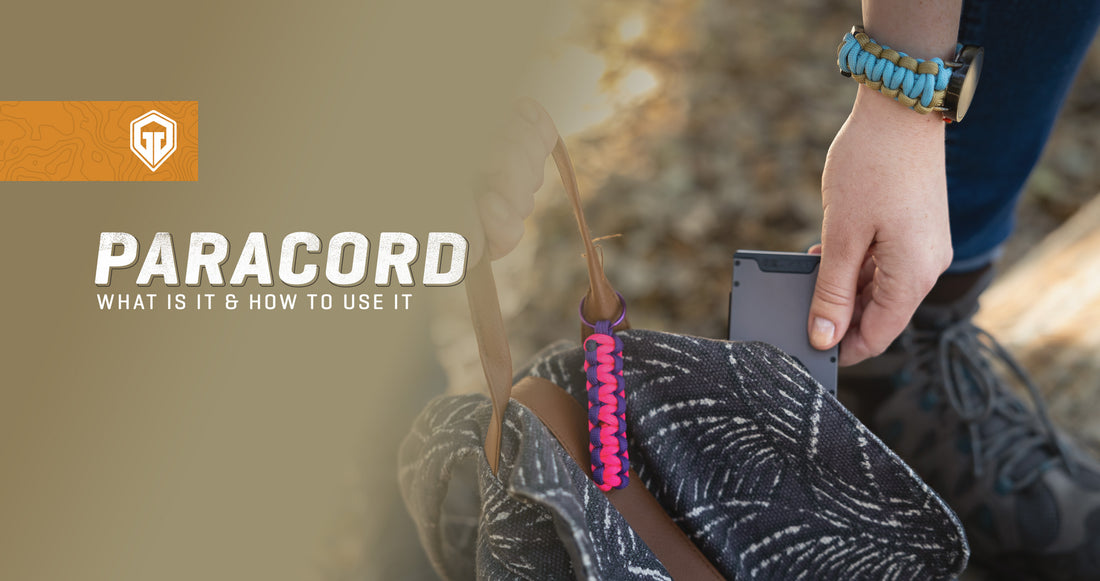If you’ve ever watched a military movie, visited a hardware store, or walked down a crafting aisle, you’ve probably seen paracord. But what is paracord used for, and what makes it different from other ropes?
Initially designed for military parachutes, paracord is a highly versatile woven rope that contains a nylon core made up of multiple strands for added durability. There are several different types of paracord, each with its own strength ratings and purpose.
But paracord isn’t strictly used for parachuting. Today, this type of cord is used for everything from camping, hiking, and rock climbing, to survival kits, decoration, and crafting.
In this article, we’ll get into detail about the different paracord types, how to use them, and where to find quality rope for whatever you need it for.
What is Paracord?
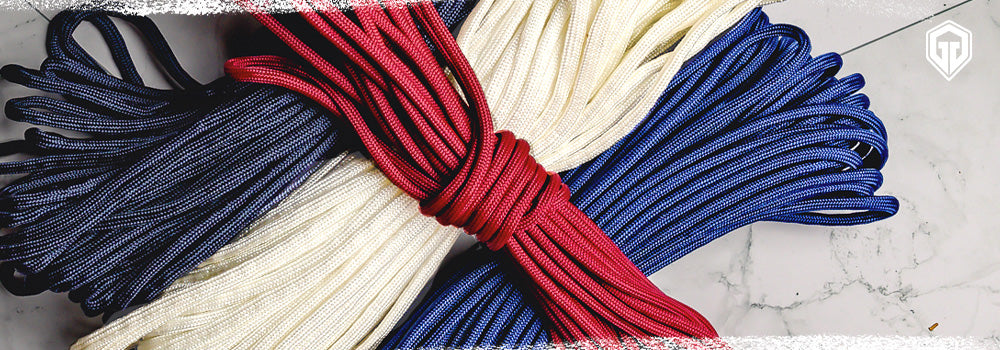
Paracord rope – otherwise known as “parachute cord,” “550 cord,” or “550 paracord” – is a type of utility cord that was originally created for military parachute suspension lines during World War II.
Paracord has a unique makeup. It’s a type of kernmantle rope, which means it is designed with a woven, wear-resistant sheath that surrounds a strong nylon core made up of multiple strands, which is where it gets its durability. It can stretch up to 30%, allowing it to absorb the shock from a parachute canopy being opened.
So, it’s easy to understand why WWII paratroopers quickly realized the usefulness of this cord and started keeping as much of it as possible for later use. Paracord quickly became a staple item for many soldiers, proving useful for tying down equipment, suspending gear, and even tying off tourniquets. When the war was over and soldiers returned home, military surplus stores continued carrying it so they could use it for civilian purposes.
The military still utilizes paracord today, but they’re not the only ones who recognize its usefulness. NASA, civilian businesses, and individuals commonly use paracord for any number of things, and manufacturers started producing a wider variety of sizes, colors, and strengths for its many different uses.
What is Paracord Used For?
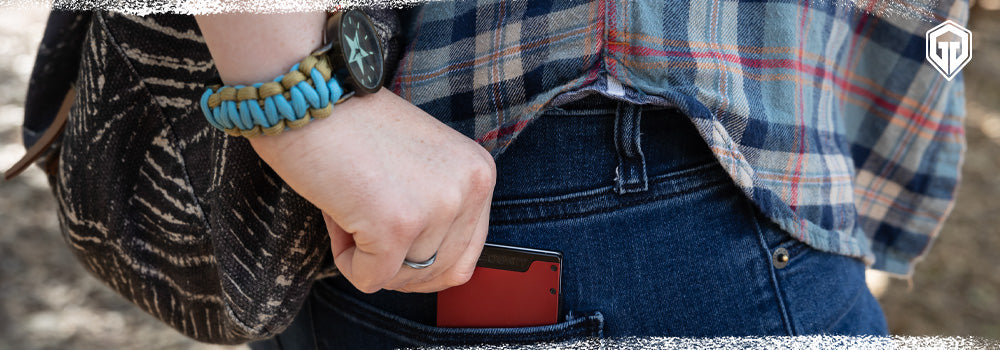
Paracord is such a versatile, durable, and inexpensive product that it has become a staple item for everyday carry, crafting, survival kits, shoelaces, and pretty much anything you need a tough cord for.
It can easily be woven together to make a variety of different things and is often made into “survival bracelets” that can quickly be unraveled into a long strand of rope in an emergency situation. Not only that, but if you cut into paracord, you can access the threads inside and use them as fishing line or for patching tents, clothing, and even wounds.
As-is, paracord is useful for hoisting, building shelters, hanging bear bags, securing gear, rescue operations, and so much more! But beyond its practical use, paracord can also be used to make pretty much anything and everything, including:
- Belts
- Lanyards
- Pet collars and leashes
- Horse tack
- Gun slings
- Toys
- Bracelets
- Decorative items
- Bracelets
- Wraps for handles
- Key chains
- Bottle carriers
- And anything else you can think of!
Types of Paracord
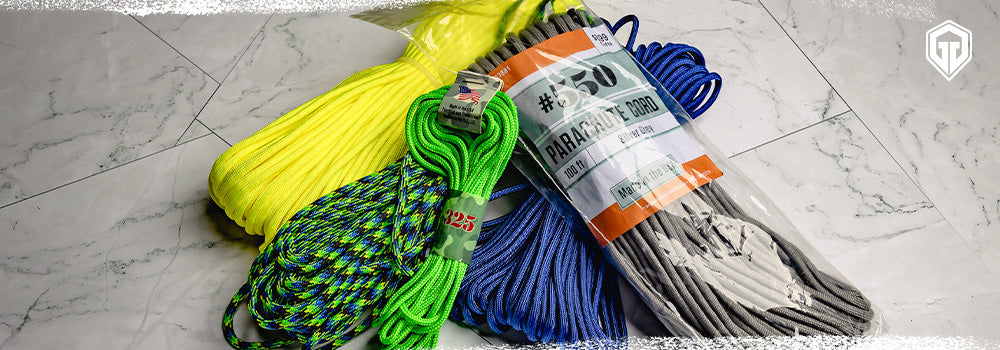
If you were under the impression that paracord is just nylon rope, think again. There are almost as many types of paracord as there are uses for it, and it’s important to choose the right one for your intended use.
The different paracord sizes are classified by type, each of which has a different makeup, size, and purpose. The strength of paracord can range from 95 to over 1,000 pounds, and the number of core strands can vary from zero to 11. And all of these different paracord types fall under one of four categories. Let’s break it down:
Type I:
Type 1 paracord is a smaller variety with a break strength of 100 pounds or less. Most of these paracords don’t have any internal strands, with the exception of 95 paracord which has one. This paracord type is often used for smaller crafting projects, or for tying lightweight objects.
|
Type |
Nano Paracord |
Micro Paracord |
Micro 90 Paracord |
95 Paracord |
|
Size |
0.75mm |
1.18mm |
1.2mm |
1.75mm |
|
Break Strength |
36 lbs |
100 lbs |
100 lbs |
95 lbs |
|
Number of Strands |
0 |
0 |
0 |
1 |
Type II:
Type 2 paracord is often referred to as “tactical paracord” because it is smaller than the original 550 paracord. It ranges in strength from 275 to 425 pounds break strength and usually has three or five strands. The one exception is 650 paracord, which is coreless and therefore not as strong as 550 paracord (despite what its name might suggest).
The smaller size of type 2 cord offers several advantages, including being lighter and easier to carry and conceal on your person. This type of paracord is useful for making smaller items that don’t require quite as much strength.
|
Type |
275 Paracord |
325 Paracord |
425 Paracord |
650 Coreless Paracord |
|
Size |
2.38mm |
3mm |
3mm |
5mm |
|
Break Strength |
275 lbs |
325 lbs |
425 lbs |
300 lbs |
|
Number of Strands |
5 |
3 |
3 |
0 |
Type III:
Type 3 paracord, often simply referred to as 550 paracord, is by far the most commonly used type. This was the original paracord used by the U.S. military and continues to be widely used to this day. It has a break strength of, you guessed it, 550 pounds and features seven internal strands for substantial durability.
This type of paracord is used for actual parachuting in addition to tying gear down, making survival bracelets, and pretty much anything else you can think of.
|
Type |
550 Paracord |
|
Size |
4mm |
|
Break Strength |
550 lbs |
|
Number of Strands |
7 |
Type IV:
Type 4 paracord is another type of parachute cord that’s designed to be significantly stronger than the traditional 550. These cords typically have over 750 break strength and at least eight internal strands. This paracord type is most often used to lift and drop heavy vehicles and supplies from military aircraft and is therefore pretty expensive to get your hands on.
|
Type |
750 Paracord |
850 Paracord |
|
Size |
4mm |
4.5mm |
|
Break Strength |
750 lbs |
850 lbs |
|
Number of Strands |
11 |
8 |
Where Can You Buy Paracord?
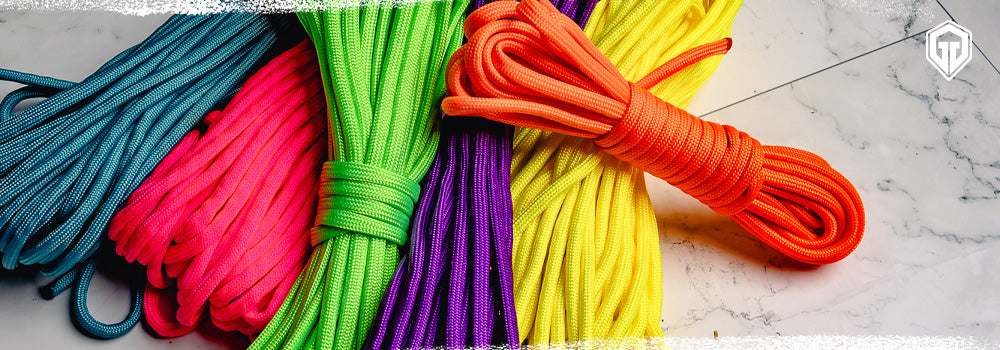
Over the years, paracord has really taken off in popularity. Now that people are using this versatile cord for everything from survival kits to Christmas ornaments, you can pretty much find it anywhere.
Most crafting suppliers, hardware stores, and big box retailers sell at least some variation of paracord, though you can typically find a better variety of high-quality cord at military surplus stores and through paracord suppliers directly. Amazon also has a wide variety of paracord options available in pretty much every type, strength, color, and pattern.
Do keep in mind that not all paracord is created equal. While if you’re buying paracord for crafting this probably isn’t the biggest deal, if you plan to use it for a survival kit or actual parachuting, you’ll want to get military spec cord from a more reputable supplier that specializes in making functional paracord.
Summary
Paracord is perhaps one of the most versatile and durable kinds of rope on the market. Though it got its start on military parachutes, paracord is now used for everything from survival bracelets to dog leashes.
The type of paracord you need depends on what you’re using it for, though it’s a good idea to check your local military surplus store if you plan to use it for actual parachuting or survival purposes.
If you’re into durable gear that can last a lifetime, check out our American-made minimalist wallet at GeoGrit.com. Be sure to follow us on Facebook, Instagram, and Twitter, and follow our blog to keep up on all our latest content.
*This page contains affiliate links. When you purchase a product included on this list, we receive a commission at no extra cost to you.

